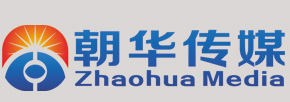SMART Education Research Center in China Established in Beijing

Afterwards, a round-table forum was organized to discuss the topic of “What kind of core qualities the children need in the future?”. The honored guests included Huang Huasan, member of the Chinese Artists Association, and “intimate sister” Lu Qin, executive director of the China Institute of Family Education, and Wu Zhi, director of SMART Education Research Center. They have given different opinions on the core qualities and key capabilities required by modern civilization in the 21st century.

Interpretation of SMART Education White Paper
For the topic of this press conference—SMART Education, the research center launched the SMART Education white paper, which was interpreted by Mr. Kong Xinmiao, member of the Education Committee of the Arts Education at Ministry of Education, chief professor at SMART Research Center. He pointed out that,“the concept of SMART Education is based on the reflection on China’s educational practice. It is a reflection on the utilitarian values of education today. We strive to put education into the process of educating people. In such a process, we will cultivate children’s core qualities and teach them to master the necessary characters and key abilities to meet their own lifelong development and social development needs.”
Under this educational philosophy, the SMART Education pattern involves Subject, Morality, Art, Relationship, and Travel Education. These five basic aspects complement each other. SMART Education uses art as a means to develop the Morality Education and subject Education. In education practice, it focuses on Art Education and Travel Education. This complementary education pattern design can ensure the motivation of the SMART Education pattern and conform to the laws of children's life growth, and it also makes up for the current lack of school education in the arts education.

For the question of what kind of children will be cultivated by SMART Education, Wu Zhi, the founder of SMART ART Education group, who built practice base for the concept of SMART Education, said: "In the main control system of SMART curriculum model, there is specific curriculum planning. For the lesson design, the concept is launched through the five curriculum links of Sense, Morality, Appreciation, interactive Relationship and Think and create, so as to involve the children growing up healthily and happily. At the same time, children are allowed to “discover beauty” and “express beauty” from their lives. And they can become a SMART child who loves creativity, excels in communication and practice."
The Similarities and Differences between SMART and STEAM Education
According to the reporter, the establishment of SMART Education Group’s curriculum system is based entirely on SMART’s educational philosophy. SMART Education carries out corresponding teaching plan design based on the division of Chinese children’s grades. In teaching and research, it also focuses on exploring the profound implications of Chinese culture and cultivating children’s cultural self-confidence,which have also been carried out in SMART’s course education.
At the meeting, Kong Xinmiao, chief professor of the SMART Research Center, said: The most attractive aspect of SMART Education is that it is not an education that is limited by practical desire for quick success and instant benefit, but an education that is oriented toward the future and focuses on people's quality. And it has a clear humanistic rationality and educational value.
The current popular STEAM Education is compared with SMART, and the similarities are pointed out: both of them focus on the education of the future society in terms of the quality of talents; both of them emphasize the realization of cross-domain learning in practice; both of them pay attention to the process of education developing student in the exploration of exchanges.
Since SMART Education is rooted in Chinese culture, while STEAM is derived from the West, so there are obvious differences between these two: STEAM Education is an education concept that promotes learning through practice, and focuses on science and technology, which is more about cultivating practical work. SMART Education pays more attention to a person's internal quality education, which is through the aesthetic education to realize the education of people's emotional growth, and it embodies the Chinese cultural tradition of ‘moral character is more important than skills’.
SMART Education is shared between China and the world!
Such education was strongly supported by Xu Qingping, Dean of the Xu Beihong Academy of Arts, member of the National College Art Teaching Steering Committee of the Ministry of Education, and honorary president of the SMART Academy of Arts, and he proposed that SMART Education is shared between China and the world. Xu Qingping gave great affirmation and high expectations for the teaching and research work of SMART Education Research Center. Xu Qingping believes that the contemporary Chinese nation is striding forward from "stand up" and "get rich" toward "get strong," and that China has the philosophical foundation and humanistic vision that embraces the diverse cultures of the world. SMART Education is a business process positioned in a global perspective, which has provided educational support for the next generation of Chinese people to go to the world. This educational philosophy is worthy of us to stick to and promote, and it is worth the understanding from the world.
During the NPC&CPPCC in 2018, education received widespread attention, especially quality education. Today's mankind is entering the age of artificial intelligence, and Chinese education is also entering the modernization stage. The educational philosophy of SMART meets the needs of the times, and it is also integrates with the quality advocated by China, so it is undoubtedly a new advancement in the education in China.
版权所有 北京朝华文化传媒有限公司 京ICP备12026250号-1
法律顾问 王伟香 北京华泰律师事务所





